Catalogue > Search
Results for : Tout le catalogue
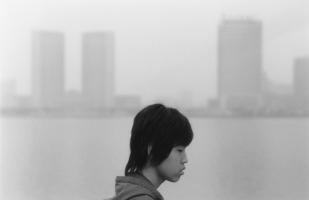

Hannes Boeck
New Hefei
Experimental fiction | | black and white | 10:11 | Austria, China | 2008
"New Heifei" enstand 2007/08 nach einem mehrmonatigen Aufenthalt in Hefei, China. Der 10 minütige in schwarzweiß gedrehte 16mm Film verhandelt die Darstellung von radikaler wirtschaftlicher Prosperität und der von Ihr geformten Räume. Dabei gelangt ein filmästhethischer und erzählerischer Kanon zur neuerlichen Anwendung, wie er im europäischen Kino ¬ über den italienischen Neorealismus hinaus ¬ etwa in Antonionis 1961 gedrehten Film "La Notte" die scheinbaren Ränder der städtischen Landnahme und ihre BewohnerInnen zu ebenbürtigen Protagonisten eines sich abzeichnenden kapitalistischen Dramas machte. "New Heifei" ist ein Experiment, bei dem Ordnung und Funktion von Drehorten und Figuren im Film und die an sie verantworteten Informationen getauscht werden. Der für eine Ausstellung konzipierte Film besteht auf die Konventionen realistischer Bildsprache um die ¬ in diesem Fall zeitlich und räumlich versetzt stattfindenden ¬ gesellschaftlichen Aufbrüche zu beschreiben.
Hannes Böck wurde am 19. 12. 1974 in Wien geboren. Nach einer Ausbildung zum Fotografen studierte er Konzeptuelle Kunst bei Renée Green an der Akademie der Bildenden Künste, Wien, und Experimentelle Filmgestaltung bei Heinz Emigholz an der Udk Berlin. Er ist freischaffender Künstler und lebt in Wien.

Radu Boeru
The Dark Side of the Flag, part 02 – “One Hundred”
Video | mp4 | color | 10:0 | Romania | 2018
Happy 100, Romania. You`re old today, yet younger than most of Europe`s countries. Why linger on the past, since you let it be destroyed by ignorance and carelessness? Why dream of a bright future since you keep birthing corrupted leaders and let them pollute you? Why didn`t I leave you when all left? Maybe because you would have felt a little emptier without me? Or I would without you? I slap myself 100 times for your inability to become what I want you to become, my sad backward country. Would you slap yourself for me too?
Radu B. Boeru Date of birth: 30. 09. 1977 E-mail: radu.boeru@gmail.com Studies: 1996 - 1998: Graphics Dept. at the National Art Institute in Kishinev, Republic of Moldova. Specialisation: classical graphics, engraving techniques. 1998 - 2002: Graphics Dept. at the National University of Arts in Bucharest. Specialisation: digital graphics & advertising. I worked since 1999 in advertising, first as a copywriter then as an art director and creative director. Since 2013 I work at my own studio and experiment with different art genres, video being by far my favourite. I also experiment with painting and sculpture, audio recordings and poetry. At the moment I work on two lyrical journals and a whole series of short experimental films, hopefully will rise some funds to start a long feature film in the near future.
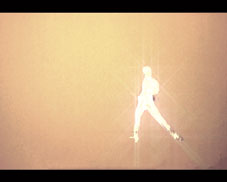

Thomas Bogaert
I am a star and i come and i go
Experimental video | betaSP | color | 2:18 | Belgium | 2005
A long time ago already the artist had already been planning to do something with the legendary dance scene from the movie "Saturday Night Fever". He decided to create a loop in which the dancer comes and goes again and again, a kind of Western derwish. He felt the urge to draw the dancer, as to create a more universal figure, so the choice of the classic animation technique was obvious. 1700 drawings were necessary to represent the shining dancer as sharp as the original. Then, giving the dancer an opaque silver colour, he retained only the essential, the moves. Because in the end, the iconographical élan of the movie is due to the fantastic choreography. The soundtrack is the original one, but played backwards. In this way the artist moves the synchronization without losing the beat and the delirious Bee Gees sound. Spots and stains in the image are part of the game. All this results in the creation of new accents. At times, letters appear, spelling the title "I am a star and I come and I go". This film may lead to a discussion about the meaning of success, or it can just be watched to enjoy the groove...
Bogaert?s films derive mostly from his own filmed material, from which he selects and creates 16 mm loops and videos. In recent years his films have often been based on icons from his childhood which he examines and defines in the present, as in "The Superfast Series", "A Study for Bruce" and "I am a star and I come and I go". The films usually lead to a series of drawings or objects which are exhibited together with the film. As for his technique, he always strives to use new combinations and applications of drawing and painting materials and even filming techniques. In his latest works he often uses the technique of animation.
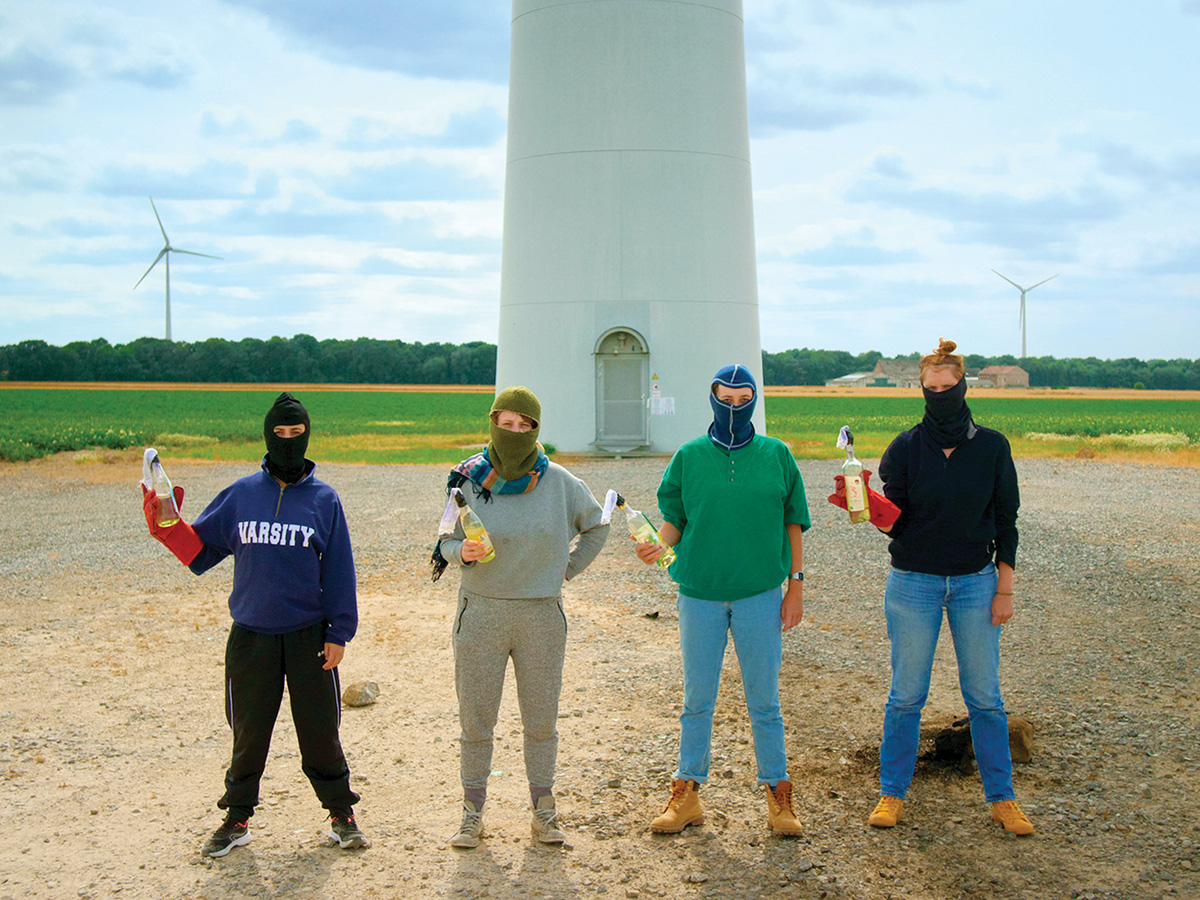

Baptiste Bogaert, Noëlle Bastin
On sourira de nous
Fiction | dcp | color | 65:0 | Belgium | 2022
Four friends tired of protests are thinking about another way to shake up capitalist society. Driven by fiction, they decide to blow up a Brussels shopping center. How to think the attack? What roles do they need to play in order to imagine taking action? Is their friendship reconcilable with such a radical act?
Baptiste Bogaert (1990) and Noëlle Bastin (1991) are a duo of Belgian directors living in Brussels. Cinema is a way for usto reflect on today's world. Through the form specific to each film, we seek to see and hear what makes our time, what affects it, how it shapes us. We like to work between fiction and documentary - where fiction is a tool to show the real, what takes place. For the same reasons, our films are often marked by sequence-shot work and regular collaboration with non-professional actors. In addition to films, we design video installations.

Peter Bogers
Glued Eye
Video | hdv | black and white | 30:0 | Netherlands | 2018
Glued Eye 2-channel installation Peter Bogers, The Netherlands, 2019 www.peterbogers.com The installation consists of two black and white video images, one video projector and two thin (2 mm) illuminated fiber lines. A large projection shows images of moving objects or people that are fixed in one place on the wall by means of a sophisticated tracking technique. This technique continuously shifts the frame of the video image in a way that the chosen object stays in one place. Thus, all movements are neutralized. Directly behind the projector a very small 4,7 inch screen shows a close-up of a moving eyeball, of which the pupil is fixed in the middle of the screen. A luminous wire is stretched across the exhibition room, between the fixed point of the projected image and the center of the small eye pupil. The wire is a physical and stationary element in the exhibition room.
1965 Born in Dordrecht, The Netherlands 1981 Graduated from Art Academy St. Joost, Breda, The Netherlands at the sculpture department. Lives and Works in Amsterdam, The Netherlands In the early eighties Bogers was heavily involved in performance art, but gradually started to use the video camera as an intermediary between himself and the public. In the nineties he started to approach sound and image more and more as self-contained, flexible media that give him access to the element of time and thus can be transformed in an attempt to make a statement about the complexity and incomprehensibility of human nature. Bogers has had solo exhibitions in international museums and galleries in Amsterdam, Utrecht, Bremen, Stuttgart, Osnabrück, Beijing, Tokyo, Marseille, Split and Pittsburgh. Among others his work is in the collection of the Stedelijk Museum, Amsterdam, Museum of fine arts, Taipei and Harvard University, USA.
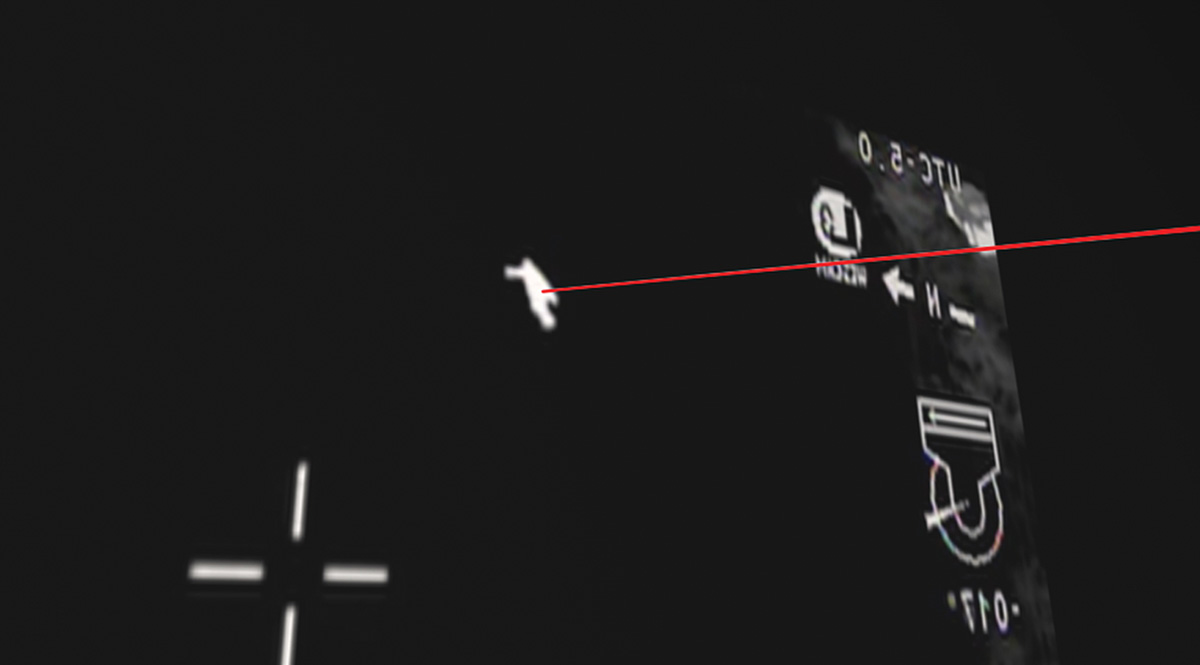
Peter Bogers
Glued Eye
Multimedia installation | mov | color and b&w | 25:0 | Netherlands | 2021
The installation consists of two black and white video images, one video projector and two thin (2 mm) illuminated fibre lines. A large projection shows images of moving objects or people that are fixed in one place on the wall by means of a sophisticated tracking technique. This technique continuously shifts the frame of the video image in a way that the chosen object stays in one place. Thus, all movements are neutralized. Directly behind the projector a very small 4,7 inch screen shows a close-up of a moving eyeball, of which the pupil is fixed in the middle of the screen. A luminous wire is stretched across the exhibition room, between the fixed point of the projected image and the centre of the small eye pupil. The wire is a physical and stationary element in the exhibition room.
Peter Bogers’ (Netherlands, 1956) work engages the interplay of sound and image to create installation works dealing with questions around the understanding and perception of sound. Working with the themes of music, speech and sound Bogers questions the boundaries of these fields and their limits and access to communication. Through his constant interaction with sound, Bogers also examines the visual, spatial and conceptual understanding of the human body and its place within the moving image and experiential installation. Bogers was one of the first artists in the Netherlands to integrate moving image into his work. He began working with video in the 1980’s as a methodology to accompany and assist his performance work and has since developed a keen approach to the medium that functions as a tool to illuminate the otherwise imperceptible. Peter Bogers studied at the sculpture department at St. Joost Academy, Breda. He has exhibited widely and had solo exhibitions both in The Netherlands (at the Netherlands Media Art Institute and the Central Museum Utrecht, among other places) and internationally (including solo shows in Bremen, Marseille, Osnabrück, Pittsburgh and Stuttgart).
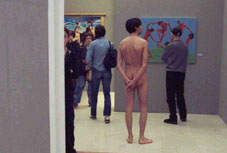

Kika Bohr, Foed Ben AFFANE
Nu sur fond de nu
Experimental doc. | s-vhs | color | 10:0 | Switzerland, Italy | 2004
The Napoleon code, that influenced widely the European legislation, punishes the body with no clothes. While all seems to be permitted in the media, in the daily life, in Italia as anywhere else, there is still the « atti osceni in luogo pubblico ». Even after thirty years, the performances by Abramovitz naked can?t be considered as natural. That?s about what a small group of students of the Berera was talking about in March and April 2004 at the café Victoria of Milan, (a bar which was hosen of course because of its name). They were stimulated by Foed Ben Affane, a young artist who starts to get interested into the conceptual world. The occasion of a great exhibition on the nude body in Bologna (Il nudo fra ideale e realtà under Peter Weiermeier direction) made born the demand to face one another and to meet, to look for the contact, at least, with the art world and the audience. And this is how that the 8th of June Foed walks nude among the paintings and the sculptures of Bologna, among its audience shared between in disinterest (simulated?) and the merry participation. And, on June 9th, he does it again with the half authorization of the curator and no without problems at the cloakroom where he wanted to let his clothes. The video presents a montage of these two days and two parts of interviews of Foed at the Victoria Bar
Kika Bohr is born in Geneva in 1956 et grew up in Milan. Daughter of artists, she accomplished at first literature studies and works as translator. Since 1998, she realizes portraits with oil painting, then sculptures in different materials (notably copper). She takes lessons at the Sculpture Academy of Brera.
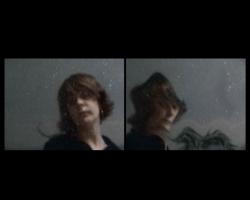

Julia Boix-vives
Surfaces troubles
Art vidéo | dv | color | 4:50 | France | 2004
"Surface Trouble" is a screening enwiden on two screens. The artist proceed to a succession before a dusty mirror. The viewer sight is torn appart between the soft and mysterious opaque of the image on the left and irresitible lure for the dformed right hand image, caricatured by special effets. The high electronic music by David Perchey adds in a gloomy way but effective to this disturbing team.
My performances breath through video its plastic and luminous dimension. The most I alone before the camera, the most I?m constrained to evolve in its still frame. In this intimate, I?m doing a strangely disturbing exercise; the physical relation with the object. Letting the object in its first function, I let myself surprised and build a sexual choreography of manipulation. My body is sculpted by the matter of the object which lay on my shoulder, that gets in my neck, throws on my face, distorts my expression, slashes me violently. For the editing, I use special effects as the backside and the slowdown, surrealist cuts, the proper sound of the object or even a strongly present music in order to penetrate directly in the lyric and poetic universe that inhabit me. Overtaken by my senses and double senses, the man crops up. I?m the puppet of my unconscious. In this work, I duplicate myself in a woman-object, an muse carrying messages.

Darren Bolger, Campbell, Caroline
Alibi
Documentary | betaSP | color | 13:3 | Ireland | 2009
Alibi is a map of hidden evidence. Alibi is a map of regret. Alibi is a physical map through frozen landscapes where the darkness in human nature is revealed. In a small Irish midland town a woman is brutally murdered while returning to her family for Christmas. When questioned by police, Paddy gives his workmate John a cover story. Twenty years later John is charged with murder and Paddy?s lie is now an alibi.
Darren Bolger & Caroline Campbell have been directing and producing collectively on projects since 2008.
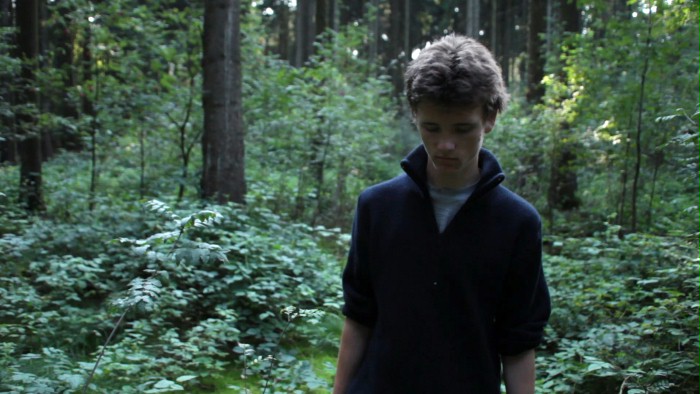
Andreas Bolm
Die Wiedergänger
| | | 72:0 | Germany | 0
Northern Germany. An ageing hippie couple endures an isolated, ghostly existence in an old country house. A boy wanders aimlessly through a forest, building a lair for himself. And a story about a never-ending escape from catastrophe. The Revenants - a film about desire, loss, and endlessly returning. A ghost story.
Andreas Bolm was born in Cologne in Germany. As a musician and sound technician he was drawn to Manchester, UK, where he started to experiment with photography and video. He began studying film at FAMU, Prague and at HFF in Munich. Following invitations to Cannes and other festivals, he was granted a bursary by the Cinefondation Residence Festival de Cannes in 2009 which allowed him to develop DIE WIEDERGÄNGER.


Andreas Bolm
Jaba
Experimental doc. | 16mm | color | 37:0 | Germany, Hungary | 2006
Zoli earns his livelihood abroad skinning chinchillas in a Danish fur factory. The film begins with the story of Zoli's return to the periphery, to the small Hungarian village of Jaba. Zoli's family, settled Romas, struggle to earn their living hiring themselves out as day-labourers. For Zoli, Jaba has no work and no prospects, so he kills time and waits. Standstill. "Jaba" tells the story of survival in one of Europe's poorest regions. A movie about the outsiders. The protagonists portray their own lives. A film that is as raw and poetic as the people themselves.
Andreas Bolm was born in Cologne, Germany, in 1971. After film and theatre science studies at the FU-Berlin, he moved to Hungary in 1996 where he had lived in his childhood. There he shot his first documentary "Gradually we hit the target". In 1997 he enrolled for a course at the film academy FAMU in Prague. Since 1999 Bolm has been a student at the documentary department of the Hochschule für Fernsehen und Film München, where he has directed the short documentaries "Rózsa" and "The Sleepers", the latter presented at Festival International du film Documentaire de Marseille in 2003 and Internationale Kurzfilmtage Oberhausen, IFF Rotterdam.

Andreas Bolm
Le Juge
Fiction | 4k | black and white | 68:0 | Germany | 2017
- Didn’t you know that you were giving poison to him- No, I didn’t know. - Didn’t you know that the flypaper could kill a cat, didn’t you? Didn’t you know that it could even kill a man? - Yes,I knew it was poison, but not as strong as that. Words and fragments of a trial: The case of poisoners. Peasant women killing their men. On the roads of Hungary a judge is haunted by his own voice. Jacques Nolot plays the vagabonding judge obsessed and caught by the claws of the past. A film noir fantastic based on a true story.
Andreas Bolm was born 1971 in Cologne, Germany. After working as a musician and sound engineer in Manchester, England, he began to experiment with photography and video. In 1999 Andreas enrolled at the documentary department of the University of Television and Film in Munich. Andreas is living and working in Germany, Hungary and France. His films Ròzsa (2000), The Sleepers (2003), Jaba (2006), All The Children But One (2008) and School Files (2012) have been screened at many festivals worldwide. Jaba was presented at the Festival de Cannes in 2006 and won the « Golden Mikeldi » for best documentary at the Zinebi film festival in Bilbao. In 2009 Andreas attended the Cinefondation Residence Festival de Cannes where he developed his film Die Wiedergänger/The Revenants (2013). The film was premiered in 2013 at the 63th Berlinale, Perspektive deutsches Kino and presented at the MoMA in New York, series New German Films. In 2013 Andreas attended a four months residency in the frame of the Nipkow Program in Berlin.

Pia Bolognesi, Bursi Giulio
The Leaks of Venice
Experimental doc. | dcp | color and b&w | 17:0 | Italy, Germany | 2020
An old building in Venice hosts an exhibition, a visitor walks through empty rooms discovering a fictionalized architectural space that functions like an abandoned theatre set. While a city that is slowly drowning floods you with its obsessive presence on and off- screen, imagination can’t exceed reality. Inspired by Alexander Kluge’s oeuvre and his constellation of film and video works, the metanarrative framework of this exploration attempts to de-construct the subjective experience and liberate the cinematic energy from the horror vacui of the display.
Pia Bolognesi (PhD, b. 1981) is an independent curator, art historian and artist based in Berlin. With a background in Performing Arts, Film Theory and Visual and Environmental Studies, she has organized large scale installations, exhibitions and multidisciplinary projects for institutions including the Tate Modern London, MoMA New York, Centre Pompidou Paris, FNC Montreal, 56th Venice Biennale. Her works and installations have been presented at Wiels Bruxelles, Musée des Beaux-Arts de Montréal, Kyoto and Tokyo Universities of Art and Design, Deutsche KunstHalle Berlin and Triennale di Milano, among others. Giulio Bursi (PhD, b. 1978) is an independent film curator, dramaturg and film-maker based in Berlin. Educated in Film Theory, he has been assistant director of Jean-Marie Straub and Danièle Huillet. He realized a documentary feature (J’écoute!, 2007) and different shorts and installations collaborating with international institutions and film festivals like Austrian Film Museum, 56th Venice Biennale, MoMA To Save and Project New York, Turin Film Festival, Il Cinema Ritrovato Bologna, Berlinale, Festival du Nouveau Cinéma Montreal, GAM Turin. Pia Bolognesi and Giulio Bursi work together as Atelier Impopulaire since 2012. Their installations have been exhibited at Centre Pompidou, La Triennale di Milano, Kunsthaus Bregenz, GAM Santiago, The Mix Place, West Bund Art Space and Power Station of Art in Shanghai, Volksbühne Berlin, ZKM Karlsruhe, Tate Modern, Berlin Gallery Weekend, Rotterdam Film Festival. Atelier Impopulaire has developed site-specific projects internationally, collaborating with artists like Aldo Tambellini, Dries Van Noten, Morgan Fisher, Danièle Huillet & Jean-Marie Straub, Peter Tscherkassky, Margaret Honda, Experimental Jetset, Christopher Williams, Alexander Kluge.


Pia Bolognesi, Giulio Bursi
Before We Love: Act 2. 12 Gates
Multimedia installation | 16mm | black and white | 30:0 | Italy | 2024
BEFORE WE LOVE is an installation and a performance in three acts: CROSSCURRENTS, 12 GATES, and THE SHADOW SOCIETY. Inspired by the legendary UMBRA Poets Workshop (1961-63), it completes Atelier Impopulaire’s trilogy about the birth of underground artistic movements and civil rights activism in the African-American, Italian and Latino communities that had migrated to New York City’s Lower East Side by the early 1960s. 12 GATES is a large-scale multi-screen installation that integrates rare archival material with new Atelier Impopulaire’s footage, drawing on UMBRA’s literature to explore the fight against cultural oppression by the movements that advocated for social justice through multidisciplinary practices.
Pia Bolognesi is an artist, cultural activist and art historian based in Berlin with a background in Performing Arts, Film Theory and Visual and Environmental Studies. Giulio Bursi is a dramaturg, film-maker, independent film curator and professor based in Berlin. Educated in Film Theory, he was assistant director of Jean-Marie Straub and Danièle Huillet. Pia Bolognesi and Giulio Bursi have worked together as Atelier Impopulaire since 2012. Their practice involves moving-image, writing, installation, sculpture.

Marie-pierre Bonniol, Christophe Didier
Mes villes
Video | mov | color | 3:3 | France | 2024
“Cities don’t exist. There is my city, your city, our cities… My cities – letters, words, lines and colours – render in scattered strokes the sum of fleeting impressions which end up telling the truth of a place.” Christophe Didier
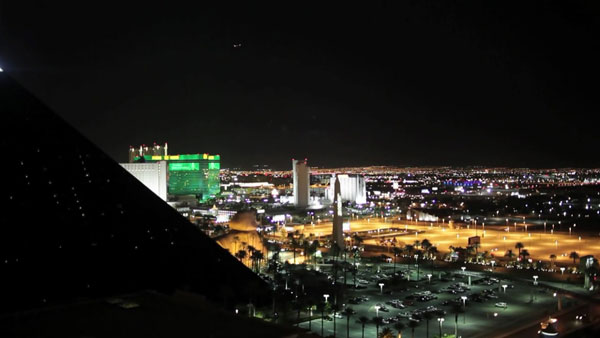
Laurence Bonvin, Stéphane Degoutin
After Vegas
Experimental doc. | hdv | color | 21:0 | Switzerland | 2013
Las Vegas fait partie des zones les plus touchées par la crise aux États-Unis. Le film traverse ce paysage de ruines du présent, vide qui émiette les quartiers résidentiels, chantiers arrêtés, paysages en suspens,banlieues ralenties, souterrains habités par des sans-abris... nous y croisons des personnages improbables, suspendus entre deux mondes. Il propose en creux une métaphore des temps d`incertitude que traverse le monde contemporain.
Laurence Bonvin est une artiste et photographe documentaire dont le travail touche au paysage, à l?architecture, l?espace public, l?informalité, les transformations des environnements urbains et des périphéries en général. Elle est l`auteur de quatre monographies et a largement exposé son travail en Suisse et internationalement. After Vegas est son premier film. Stéphane Degoutin est un artiste et théoricien, co-fondateur du projet Nogo voyages et du laboratoire de recherche LOPH. Ses champs de recherche sont l?humanité après l?homme, la ville après l?espace public, l?architecture après le plaisir, le Umwelt de l?information. Il a co-réalisé avec Gwenola Wagon "Dance Party in Iraq" (2012), "Cyborgs in the Mist" (2011) and "Mute" (2011).

Laurence Bonvin
Avant l'envol
Documentary | hdv | color | 19:46 | Switzerland | 2016
Avant l’envol propose une exploration de la ville d’Abidjan par le biais de son architecture d’état. Le film, précis et minimal, offre un état des lieux quasi chronologique de l’architecture moderniste dans la principale ville ivoirienne tout en soulignant la monumentalité et la qualité architecturale de ces édifices construits pendant les années euphoriques et visionnaires qui suivent l’indépendance. Dans ces architectures venues d’ailleurs le temps semble être suspendu. On y découvre parfois des formes qui traduisent le désir d’intégration de la culture vernaculaire mais qui trahissent, de plus en plus au fil du temps, une inadaptation au climat local. L’attention est portée aux usagers et à la manière dont ils s’approprient ces espaces et leur donnent vie à travers la chorégraphie des gestes, des déplacements, des interactions, des utilisations informelles et autres détournements qui s’y opèrent. Avant l’envol questionne ce patrimoine architectural riche, ambitieux autant que dystopique, interroge le sens et le devenir de cet héritage post-colonial.
Laurence Bonvin est une réalisatrice et photographe suisse ; elle vit entre Berlin et Genève. Son approche de nature documentaire est centrée sur des phénomènes de transformation du paysage urbain et naturel, de l’environnement béti et humain. Son travail photographique a fait l’objet de trois monographies, de nombreuses publications et expositions en Suisse et internationalement. Récemment Bonvin a réalisé trois court-métrages documentaires : After Vegas (2013) avec Stéphane Degoutin ; Sounds of Blikkiesdorp (2014) et Avant ‘envol (2016), projeté en première internationale à la Berlinale et lauréat du prix de la meilleure caméra au Kurzfilmtage de Winterthur.
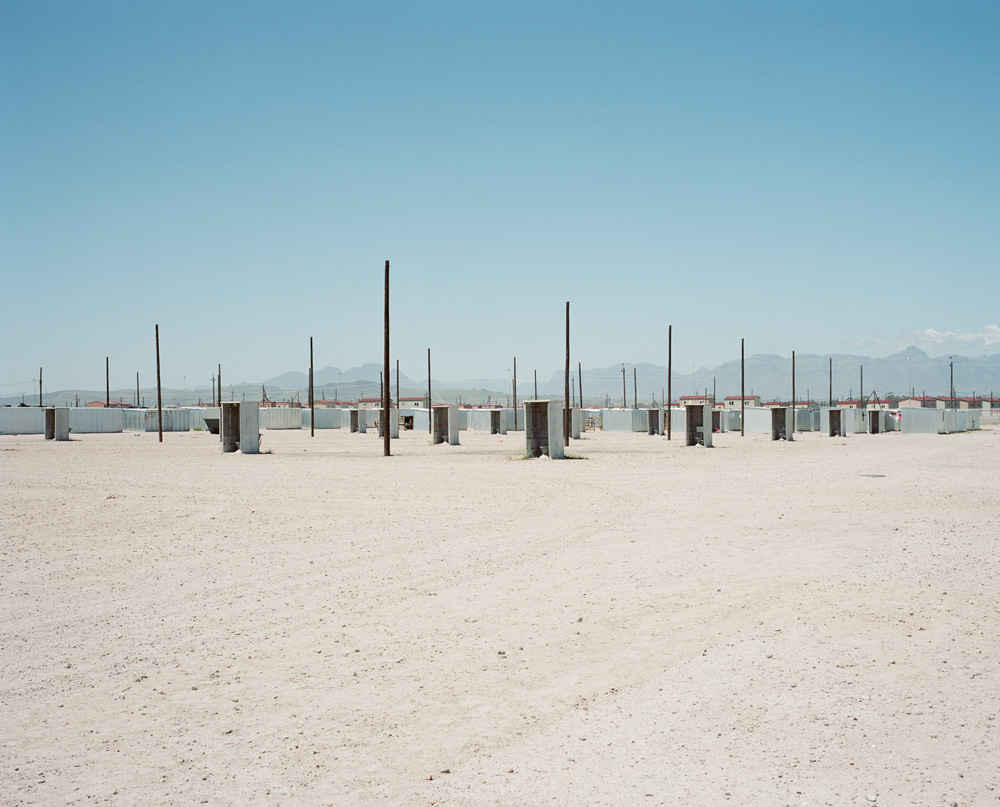
Laurence Bonvin
Sounds of Blikkiesdorp
Experimental doc. | hdv | color | 25:0 | Switzerland, South Africa | 2014
Sounds of Blikkiesdorp glimpses into everyday life in Blikkiesdorp, a newly built temporary housing area in the far periphery of Cape Town. Erected by the municipality, it is occupied since 2008 by people from very different backgrounds, some who were previously living in a nearby squatter’s camp, some having been forcefully moved from the city to this hostile and isolated place. Despite the harsh living conditions and the uncertainty of their future, the people we come across do all their best to improve their house, to make a living and keep their spirits high. In a place of informality and resourcefulness, music becomes the link between the structures, the alleys and the people: the real soundtrack for Blikkiesdorp.
Laurence Bonvin is a documentary photographer and artist whose work deal with landscape, architecture, public space, informality, urban transformations and peripheries at large. She has extensively exhibited her work in Switzerland and internationally. She is the author of four monographies. Sounds of Blikkiesdorp is her second short film.

Nicolas Boone
Psaume
Fiction | 4k | color | 48:20 | France, Senegal | 2015
In a near future, the villages of a Sub-Saharan area have all been deserted. Mad and disable people as well as child soldiers are the only ones who remain on those dry lands. In this survival atmosphere, relationships are harsh
Just graduated from Les Beaux-Arts de Paris in 2001, Nicolas Boone directed shootings/performances, “films for once” without any recording system: his work constantly stands between direction and video recording –when, sometimes, the “simple” act of shooting makes the film itself. His work takes various forms: series (BUP, 2007/2008), feature film (codirected with Olivier Bosson: 200%, 2013), short films –sometimes gathered together to compose a whole program (Les Dépossédés, 2012)... The Vivo Art Center, in Vancouver, presented a complete retrospective of Nicolas Boone’s work in 2011. His films were selected in many international film festivals, and often awarded, such as Bailu Dream (2013;; shown in IFFRotterdam, in IndiesLisoa and in IFFJeonju this year) and Hillbrow (2014), selected in FID Marseille (France), the IFF Indies in Sao Paulo (Brazil), the IFF in Clermont-Ferrand (France), the IFF Entrevue in Belfort (France), where it received 3 awards (Audience, One+One and Camira Prizes), the Festival du Nouveau Cinema/FNC in Montreal (Canada), where it received the grand prize (Loup argenté), the Lago Film Festival (Italy), where it won the First Prize of the Jury. In France, it also received the Grand Prize “Scribe du cinema” in 2014. In Fall 2015, it was part of a collective exhibit in « La Galerie », Noisy-le-Sec (France). Psalm, shot in Senegal in 2015, had been prized in FID Marseille (Prizes of the CNAP and of the Students) and screened at the RIDM, the Viennale & other venues. Bailu Dream, Hillbrow and Psalm were screened at UnionDocs Center for Documentary Art (Brooklyn) in November 2015. 2015 Psaume (48’;; Gagué-Chérif, Sénégal) Dog Over (8’;; Paris;; part of the Goethe Institute’s « Europoly » project) 2014 Hillbrow (32’;; Johannesburg) 2013 Les Dépossédés (50’;; Togo, Quebec, Paris) Le Rêve de Bailu (12’;; Bailu – China) 2010 200% (80’;; Saint-Fons – France) 2009 Transbup (51’;; Ardèche – France) 2008/07 Série BUP (10’ each of the 9 episodes – France) 2006 La Transhumance fantastique (54’;; Dordogne – France) 2005 La Nuit blanche des morts-vivants (30’;; Paris) Portail (40’;; Région Centre – France) 2004 Fuite (7 x 7’;; Lorraine – France) Plage de Cinéma (14’;; Nord – France) 2003 Lost Movie (11’;; Pontoise – France) 2002 Un film pour une fois (15’;; Paris)

Nicolas Boone
Etage 39
Experimental fiction | 4k | color | 29:0 | France | 2017
In an indeterminate space, against a backdrop of virgin landscapes with no trace of civilisation, exotic beaches, mountains, deserts, forests, coastlines and volcanoes, the X (1) wander around. One of them, who we quickly identify as a kind of moderator, comes in and out of the group. He strikes up conversations, interrupts them and restarts them. Everyone improvises. 1 The X is what I call the 10 characters in the Bressonian sense. They were chosen for their eloquence and unique imaginations.
French filmmaker Nicolas Boone began as a visual artist and performer, but gradually got into film directing. He makes primarily short-length films ? both documentaries and fictional movies. Over the past few years, many of them have ended up at renowned film festivals (FID Marseille, IndieLisboa, IFF Rotterdam, and others). Boone?s only full-length documentary to date is the social fresco 200% (2011).
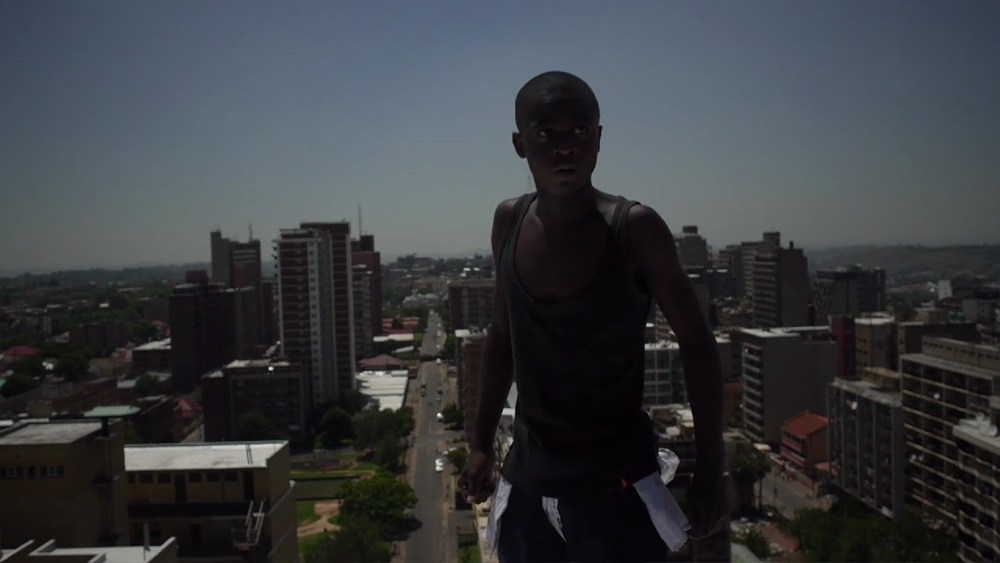
Nicolas Boone
HILLBROW
Fiction | hdv | color | 32:0 | France | 2014
Hillbrow, Johannesburg`s oldest and trendiest cultural attraction, has now developed into a densely populated and rather violent working-class neighborhood. The movie HILLBROW offers a selection of local stories that cross over geographical boundaries and whose fictional characters are portrayed by inhabitants presently living in the neighborhood. In ten journeys, HILLBROW draws a labyrinth of urban tensions.